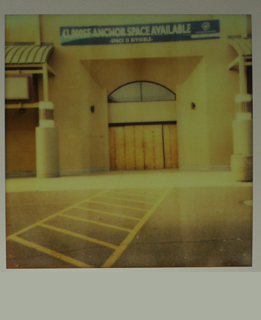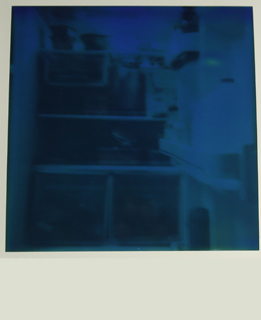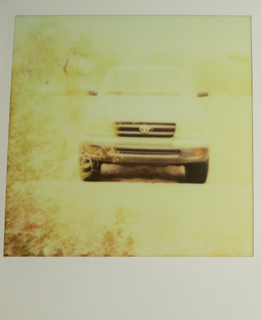Roid Week 2012: Not a festival of performance-enhancing drugs or a promotion for Preparation H.
It’s an annual celebration of Polaroid photography. Every day, from August 13-17, Polaroid enthusiasts from all over are asked to post their two best new photos on the ‘Roid Week 2012 Flickr group.
I discovered Roid Week on the Sunday before it kicked off. Fortunately, I’d recently picked up a Polaroid OneStep camera and some SX70 film from The Impossible Project (the only place still producing Polaroid film), so the timing was perfect.
In this, my first Roid Week, I wanted my theme to show the way things are today in Phoenix. I set goals to shoot movie and concert marquees, the Metro Light Rail, license plates, “House for Sale” signs, political campaigning and shuttered commercial real estate.
Thanks to distractions and time constraints (excuses, excuses, lack of planning), I only accomplished a few of these goals. But as I’m often reminded, you can still uncover coolness down the diverted path.
What’d I learn from my first Polaroid project?
- I need a scanner. To post these film images on the web, I took a picture of each Polaroid with my digital camera. As you can see, the lighting is all over the place: some look way too dark and the brighter ones have an obscure yellow tint. A scanner would give a cleaner, more accurate portrayal.
- Keep the camera extremely steady; prop it up on something if possible. The first picture of the project turned out the best because I propped it on top of a brick wall to steady the shot.
- Overcompensate for lighting conditions. If it’s dark outside or poorly lit indoors, the photo will turn out dark – if at all. The aperture setting of the camera is tricky: if set too low when shooting in daylight, the shot will develop overexposed (like most of my shots above). This takes practice and a lot of trial and error.
- Wait 40 minutes before posting or scanning the photo. That’s how long it takes for the film (PX70 Color Shade by The Impossible Project) to fully develop. For example, I posted the shot of the fridge about ten minutes after I took it. In the end, the photo turned out much lighter than it’s depicted above.








